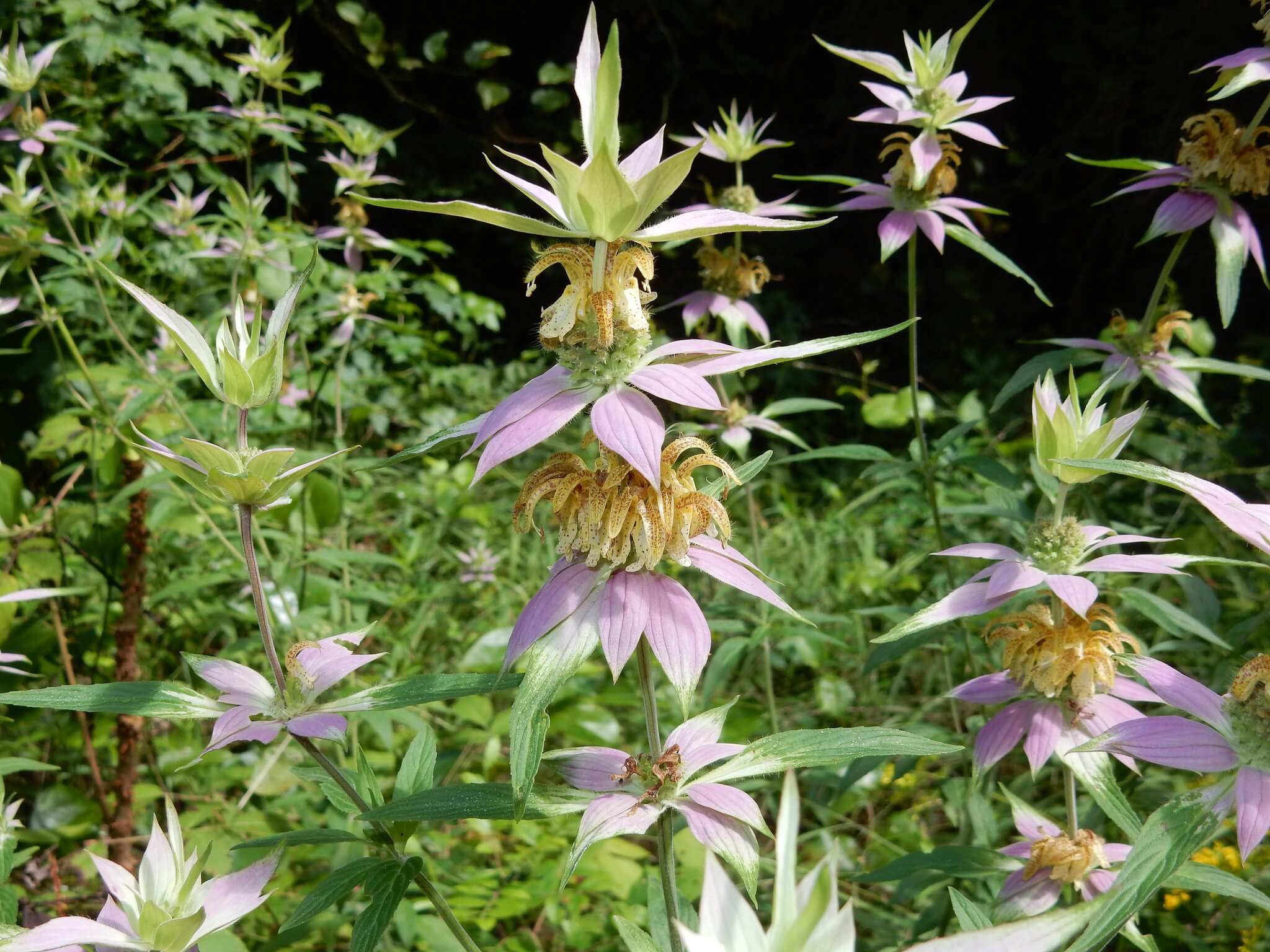Anise Hyssop (Agastache foeniculum)
Anise Hyssop has long-lasting blooms that provide nectar and pollen for many butterflies, skippers, moths, and native bees, including the specialist bee Beebalm Shortface (Dufourea monardae) (illinoiswildflower.info). Once established it is fairly drought-resistant (illinoiswildflower.info). It can do some self-seeding, so be glad for the extra babies to share! Anise Hyssop is typically native west of Michigan, but presumably spread into the Upper Peninsula, where it was first collected in 1934 and later collected in dry fields and openings in other counties (michiganflora.net). It is typically avoided by deer and other mammals because of the strong anise scent of the foliage.
Anise Hyssop has long-lasting blooms that provide nectar and pollen for many butterflies, skippers, moths, and native bees, including the specialist bee Beebalm Shortface (Dufourea monardae) (illinoiswildflower.info). Once established it is fairly drought-resistant (illinoiswildflower.info). It can do some self-seeding, so be glad for the extra babies to share! Anise Hyssop is typically native west of Michigan, but presumably spread into the Upper Peninsula, where it was first collected in 1934 and later collected in dry fields and openings in other counties (michiganflora.net). It is typically avoided by deer and other mammals because of the strong anise scent of the foliage.
Anise Hyssop has long-lasting blooms that provide nectar and pollen for many butterflies, skippers, moths, and native bees, including the specialist bee Beebalm Shortface (Dufourea monardae) (illinoiswildflower.info). Once established it is fairly drought-resistant (illinoiswildflower.info). It can do some self-seeding, so be glad for the extra babies to share! Anise Hyssop is typically native west of Michigan, but presumably spread into the Upper Peninsula, where it was first collected in 1934 and later collected in dry fields and openings in other counties (michiganflora.net). It is typically avoided by deer and other mammals because of the strong anise scent of the foliage.
Life Cycle: Perennial
Sun Exposure: Full, Partial
Soil Moisture: Medium, Medium-dry
Height: 2-3 feet
Plant Spacing: 1-1.5 feet
Bloom Time: June-September
Bloom Color: Purple
Advantages: Bird Favorite, Pollinator Favorite, Deer Resistant, Great Landscaping Plant
Host: 2 species of butterflies and moths use this as a caterpillar host plant in our area (nwf.org)
Specialist Bee: Beebalm Shortface (Dufourea monardae) (illinoiswildflower.info)






